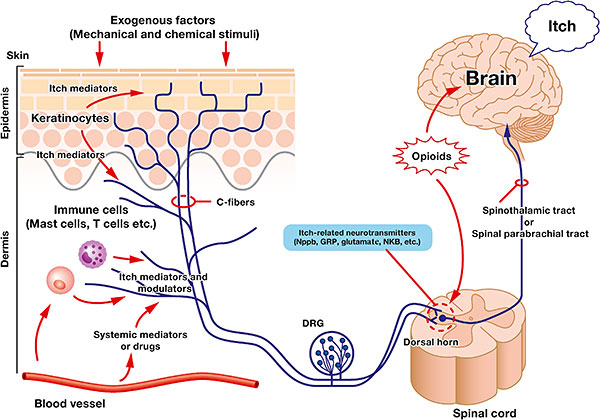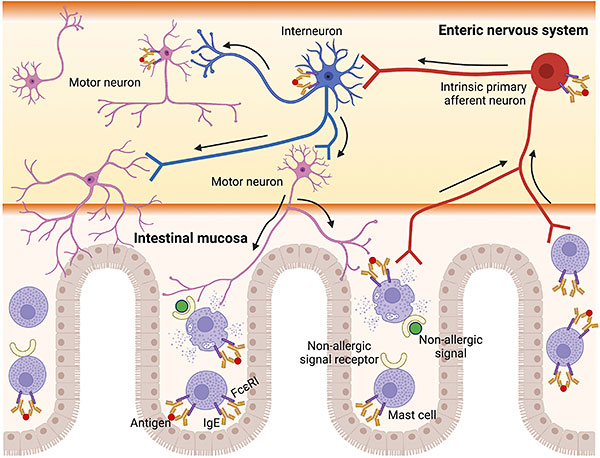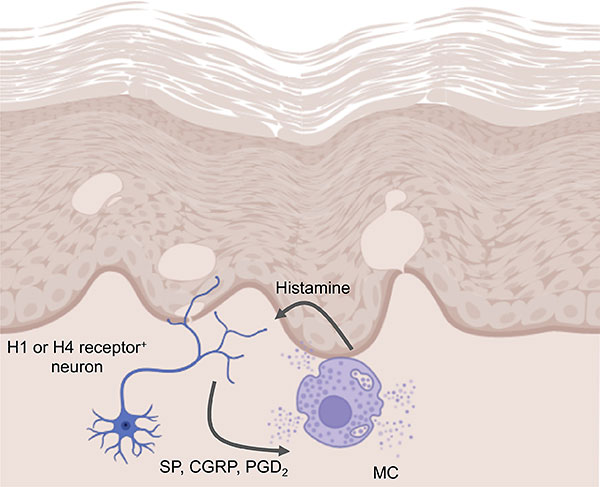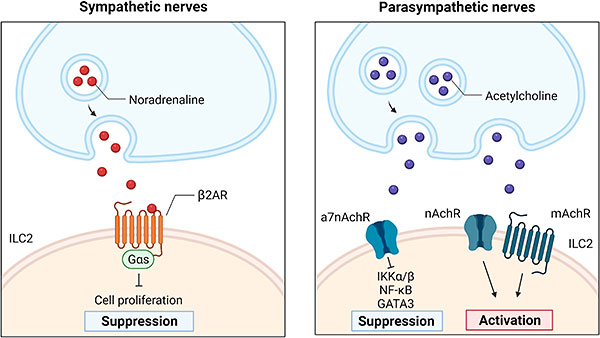Volume 71, Issue 3 (July 2022)
Review Series: Neuroimmune interactions in allergic diseases
Tominaga and Takamori's review article focuses on peripheral itch sensitization in atopic dermatitis. Detailed molecular mechanisms for so-called “itch-scratch cycles” and modifications by type 2 immune reactions are comprehensively described. In these vicious cycles, signals from TRPV1 and TRPA1 receptors have critical roles. They also stress the importance of skin barrier-neuro-immune triadic connectivity to understand peripheral itch sensitization in atopic dermatitis.
Kadowaki et al. offer an excellent review on neuro-immune crosstalk in the intestine, with special reference to mucosal mast cells and neurons. They offer anatomical, physiological, and pathological overviews of the nervous and the immune systems in intestine, using a food allergy mouse model. Interaction between mucosal mast cells and neuronal cells is also described in detail, showing how some of the signaling molecules (CGRP, FcεRI, adenosine) work as key molecules for the pathologic process.
Toyoshima and Okayama's review articles give us an overview of mast cell/nerve loop cross-talks in allergic inflammations in the skin, lung, and intestine tissue. It should be noted that mast cells are located in the perivascular area and adhere directly to the nerves. Histamine released by mast cells reacts with nerve fibers via histamine receptors, leading to the release of neuropeptides including substance P and CGRP, which in turn elicit histamine release from mast cells through MrgprB2 (substance P receptor).
Irie et al. provide us with a current overview of the role of neuropeptides in ILC2. ILC2-induced type 2 inflammation is now recognized as an aspect of allergic inflammation in the lung, nose, skin, eyes, and intestine. ILC2 expressed β2-adrenergic receptors (β2AR) and β2AR agonist used in asthma treatment inhibits ILC2 proliferation in allergic inflammation. Neuromedin U (NMU) released from cholinergic and sensory nerves, epithelial cells, and immune cells activates ILC2 through the NMU receptor in type 2 inflammation models. Although ILC2 did express a CALCRL/RAMP1 heteromeric receptor for CGRP, the effect of CGRP on ILC2 functions is less clear (it may facilitate or suppress ILC2-mediated type 2 inflammation) and is context-dependent.






